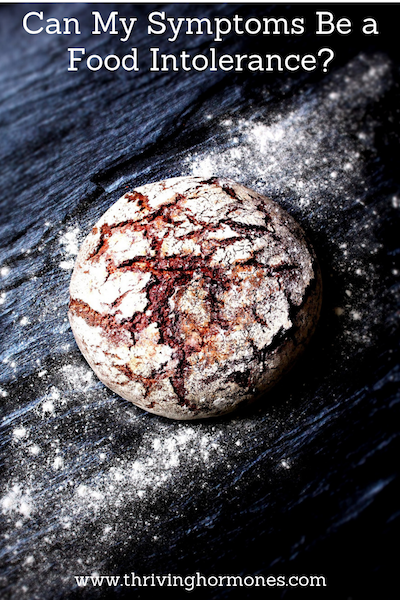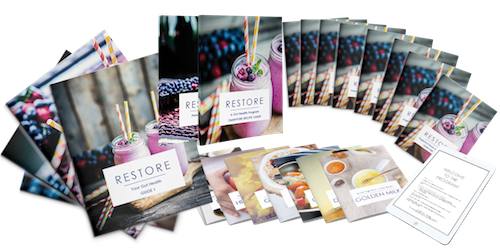Can My Symptoms Be Food Intolerance?
I’m sure you’ve heard about food intolerances or sensitivities, or you are maybe the one who is struggling with them.
Food “sensitivities” or intolerances can affect your health in so many ways.
Unfortunately, they are very common.
I’m not talking immediate allergic reactions or anaphylaxis that involve an immune response. Those responses can be serious and life-threatening. If you are allergic to any food, you need to stay away from any traces of foods you are allergic to and know about emergency medication in case you are exposed to it. Speak with your doctor or pharmacist and find out what they are.
What I’m talking about here is a little different. I’m talking about food intolerance, which means that your body doesn’t tolerate a specific food very well and it can cause not immediate, delete but chronic symptoms in the body. The Symptoms usually take many hours or days to show up, and the can take hours or even days be located anywhere in the body.
That is why it is so tricky to identify them.
Symptoms of food intolerances
Some pronounced symptoms that are immediate and painful are gas, stomach pain, cramps, and bloating diarrhea. Those are gastrointestinal symptoms and can occur when you have lactose or gluten intolerance.
On the other hand, there are symptoms that you would not think that they have any connection to food intolerance because they are not that obvious like:
- Headaches or migraines
- Autoimmune conditions like Hashimoto’s or rheumatoid arthritis, sweating, or increased heart rate or blood pressure
- Muscle or joint pain
- Exhaustion after a good night’s sleep
- Inability to concentrate or feeling like your brain is “foggy.”
- Increased heart rate, Sweating, or increased blood pressure
- Rashes or eczema
- Shortness of breath
When your body has difficulties digesting specific foods, it can affect your metabolism, hormones, and cause inflammation, which will result in any of the symptoms listed above.
How to prevent these intolerances
The primary thing to do is to figure out which foods or drinks you may be reacting to and stop eating them.
I know….this sounds so simple, but I know from experience with clients can be HARD.
You need to identify your food/drink triggers and eliminate them.
Yup that is what you have to do get rid of those offending foods/drinks to feel better. All traces of them, for four full weeks and be on the top of your symptoms.
If you notice that things are getting better, you can decide if it’s worth it to slowly introduce them back up one at the time or stop ingesting them.
Where to start?
Start with those two most common triggers of food intolerances:
- Gluten (in wheat, spelt, farro, rye, Kamut, durum, bulgur, semolina, triticale – look for a “gluten-free” label – try gluten-free grains like quinoa, millet, rice & gluten-free oats).
- Lactose (in dairy – you need to eliminate, or look for a “lactose-free” label, or try nut or coconut milk instead).
This is a good place to start. Lactose intolerance is thought to affect up to 75% of people, and “non-celiac gluten sensitivity” might affect up to 13% of people.
So, when you eliminate all traces of gluten and lactose for four weeks, you will find out whether either or both of these, is a source of your symptoms.
No worries, you won’t feel deprived, even though grains and dairy are a part of many government-recommended food guidelines, for sure you can get all of the nutrients you need to form another nutrient-dense food sources.
You can monitor how you feel by tracking the food you eat and writing how you feel after you eat them. You might be surprised what you are going to find out.
Make sure that the eliminated food is not hiding in other food you eat. The food you eliminate can hide in many different foods, so read your labels carefully. The whole point of elimination is to get off the food, which triggers the immune response, give the body a break and find out if you are sensitive to it. Packaged foods, sauces, dressings, restaurant food, are notorious for adding ingredients that you’d never think are there. For instance: sugar hides in almost everything, wheat is added to processed meats, sauces, and soy sauce. Lactose can be found in medications or supplements?
When in doubt you HAVE to ask the server in a restaurant about hidden ingredients, read labels, and consider cooking from scratch.
What if it doesn’t work?
If eliminating these two food intolerances doesn’t work, you need to go couple steps further and eliminate all dairy (even lactose-free) and all grains (even gluten-free), beans, nuts and seeds for four weeks.
You may have to see a qualified healthcare practitioner like nutrition consultant or naturopath for help to figure out the plan, and that’s OK. I want you to get better, so you don’t have to suffer if you don’t need to!
Dairy-free milk recipe: Homemade Nut/Seed Milk
Makes 3 cups
1 cup raw nuts/seeds (hazelnuts, almonds, cashews, walnuts, pecans, pumpkin seeds, or sesame seeds)
3 cups water
1/2 teaspoon vanilla extract (optional)
pinch of salt
- Soak nuts/seeds for about 10 hours.
- Rinse nuts/seeds.
- Transfer them to the blender and add water. Blend on high for about two minutes until very smooth.
- Strain through a small mesh sieve with 2 layers of cheesecloth.
Squeeze if necessary.
You can add the milk to your smoothies or other recipes for baking.
Enjoy!
Double the recipe and store the milk in a glass container in the fridge for up to 7 days.
In Health,
Angie



